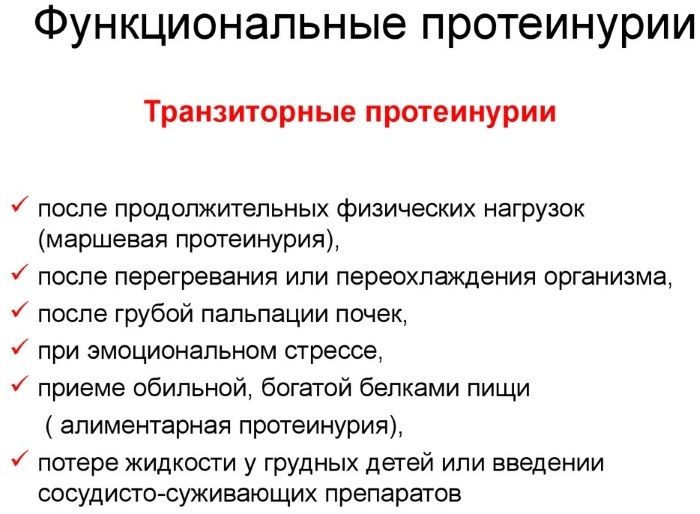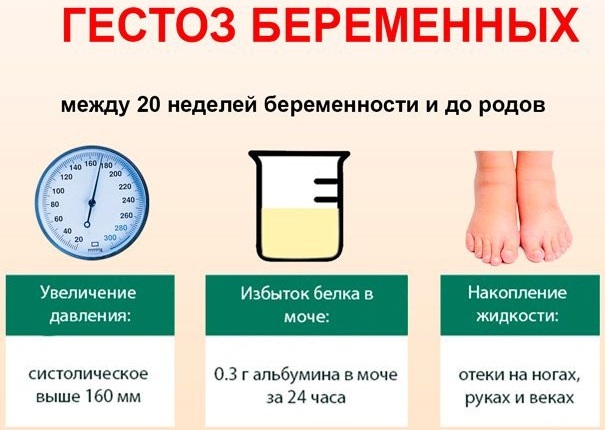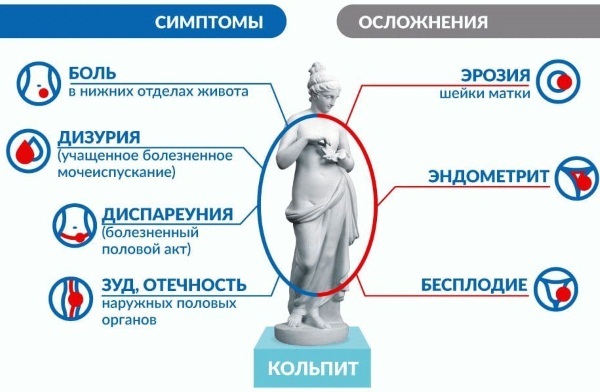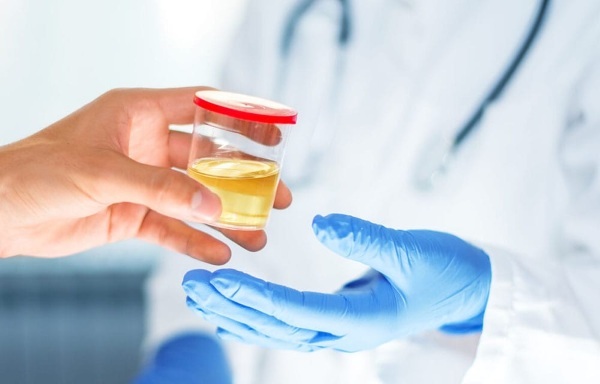The study of urine in the laboratory is extremely important. The data obtained reflects the state of the body. Urine foams in women for different reasons.
The triggering mechanism of the process can be systemic diseases, as well as disorders in the urinary system. Sometimes the symptom is not dangerous. If a symptom manifests itself, immediate specialist advice is required.
Record content:
- 1 Changes in the morning hours
- 2 What can influence externally
- 3 Pathology
- 4 During pregnancy
- 5 What needs to be done?
- 6 When is a symptom dangerous?
- 7 Treatment features
- 8 Preventing the development of a symptom
- 9 Video about foam in urine
Changes in the morning hours
A foam hat is formed for a variety of reasons. Sometimes dehydration is her provocateur. The process is provoked by a deficiency of water in the body or its loss in the absence of restoration of the supply. As a result, the composition of the urine is concentrated, and a stable foam forms on its surface.
Prolonged retention of urine in the bladder is characterized by leakage under rapid pressure. Air bubbles form and disappear quickly. A frothy cap in the morning is formed with a condition such as polyuria. The pathological process is characterized by an active urge to urinate.
They are triggered by taking diuretics and eating foods or drinks that stimulate kidney function. Urine forms quickly and is expelled under pressure. For this reason, bubbles form.
What can influence externally
Females foaming urine (for different reasons) when eating high-protein foods. The body is overloaded with proteins. This condition is called proteinuria. It can be caused by external influences, infectious processes or metabolic failure.
The table shows the types of proteinuria and their manifestations:
| Classification | Description |
| Transient | The simplest form that does not require therapy. Usually the provocateur is stress, overwork, depressive disorder, fever. |
| Static | It is provoked by any pathology or penetration of an infection into the body. In this case, diagnostics and long-term therapy are required. Usually, patients are worried about migraines, fever, body swelling, incessant thirst. |
| Orthostatic | The disease is extremely rare. It has not been studied sufficiently by medicine. Foam formation is not triggered by a high protein content. The analysis results show its complete absence. |
In some cases, the presence of foam indicates that the urine contains organic matter. However, the appearance of the test material is not enough to identify the exact cause. Often, the symptomatology of the pathological process is erased. Only a doctor can identify the disease after research in a laboratory.
The reasons for the appearance of foam in the urine may be due to external factors.
Among them it should be noted:
- aggressive environment;
- emotional stress;
- depressive disorder;
- temperature increase;
- rapid urination;
- eating too much food;
- physical overwork.
In the absence of pathology, specific treatment is not carried out. It is recommended to reduce the influence of harmful factors. But frothy urine can be a sign of a serious medical condition. It is important to carry out diagnostic measures.
Pathology
Usually, women pay attention to the foaminess of urine in the presence of pain and discomfort in the lower abdomen or lower back. Such markers signal a failure in the functionality of the urinary system.

Pathological reasons for the release of foamy urine include:
- Pyelonephritis, glomerulonephritis, disrupting the filtration process of the kidneys. With such pathologies, urine becomes cloudy, which is provoked by an increase in protein levels. The change in the composition of the urine causes the formation of foam. The patient may experience asthenia, nausea, and an increased urge to urinate.
- Processes of an infectious and inflammatory nature. They are caused by the multiplication of pathogenic bacteria in the genitourinary system. A woman may complain of pain in the lower abdomen, a decrease in a single portion of urine, its clouding with frequent urination, and an increase in temperature. The reasons for the increase in the protein marker are often infectious urethritis. The process can be provoked by pathologies such as gonorrhea, trichomoniasis, mycoplasmosis, candidiasis, gonorrhea.
- Diabetes. Represents a violation of metabolic processes of a chronic nature. The basis of the pathology is the insufficient production of insulin by the islet of Langerhans in the pancreas. The disease accounts for 10% of the world's population. Has a hereditary basis. Symptoms of the disease include a change in blood pressure, deterioration of vision, and a violation of the cardiovascular system. Among the many signs, urine frothiness should also be noted.
- Arterial hypertension. It is caused by a violation of the cardiovascular system and urinary excretion. Due to the increased pressure in the vessels, the filtration capacity decreases, and large protein molecules are converted into secondary urine.
- Urolithiasis. It is characterized by the formation of calculi in the urinary organs. Pathology is characterized by the release of foamy urine. Often white flakes can be traced in it. The disease is accompanied by colic in the kidneys and intoxication. An admixture of blood is observed in the urine, which indicates the movement of stones, which have a traumatic effect on the mucous tissues of organs.
-
Cystitis. Often, foam in the urine appears with a disease that occurs in the acute or chronic phase. Pathology is characterized by a violation of the process of urine output. A complication of the course of the disease is provoked by an infection that spreads upward, and the development of such a complication as pyelonephritis. The disease is expressed in acute pain and burning sensation during urination, increased sweating, fever and chills. In addition to foam, purulent and bloody inclusions can be traced in urine. Often they indicate a significant morphological disorder of the mucous membrane of the bladder and its deeper layers.

- Amyloidosis. It is a serious pathology. It consists in a violation of the production of proteins and the accumulation in the blood and internal organs of a protein - amyloid. The disease is characterized by the discharge of urine with a white foam. Urination is impaired. The woman complains of nausea, swelling. Plaques form on the skin.
- Oncological process, which affects the functionality of the circulatory system. The disease provokes the appearance of paraprotein proteins in urine, which cause increased blistering.
If a fistula forms in the bladder, it also causes blisters to appear. This is explained by the fact that air enters the urine. Urine exudes a pungent odor. Fecal inclusions are mixed with it. The discharge becomes dark and cloudy. Fistula is a serious condition.
The condition requires hospital therapy. Eliminated by operation. Usually, pathology is provoked in diseases of the large intestine, neoplasms of a different nature, which provoke a violation of its integrity.
During pregnancy
Urine foams in women (different reasons are described in this article) during pregnancy. Expectant mothers are regularly tested for protein content in urine. Often, pathology is diagnosed during the first months of gestation.
Increased protein levels are a dangerous sign in pregnancy. It indicates the development of inflammation in the kidneys. Usually accompanied by pain in the lumbar region, as well as an increase in temperature.
Urine can foam profusely even at the very beginning of gestation. This symptom is provoked by toxicosis, accompanied by vomiting and urge to urinate. Foam in a pregnant woman is also formed with an abundant loss of fluid in the body.

After 20 weeks of gestation, the symptom is associated with gestosis. This is late toxicosis. With this diagnosis, protein and blood pressure increase. Swelling of the body is formed. Without proper therapy, gestosis is a danger to the life of the pregnant woman and the baby.
The disease is more often observed in women with increased weight or suffering from chronic kidney disease. Also, a provocateur is a failure of the hormonal background. It is stopped by a specialist in stationary conditions, where the protein level is constantly monitored.
What needs to be done?
Urine foams in women, usually with the development of a pathological process. The symptom requires immediate attention to a specialist. The doctor will be able to determine the exact cause and prescribe the appropriate therapy. Self-treatment is not recommended.
If the reason for the foam is a low intake of fluid in the body, then doctors are advised to increase the volume of its consumption. An adult whose body weight is 60-80 kg is recommended to drink up to 1.5 liters of clean water every day.
The volume should be increased in hot weather and heavy physical exertion. For women who have kidney or heart disease, the amount of fluid consumed is determined by the doctor.
During the treatment of pathologies, one of the symptoms of which is foamy urine, the diet should be adjusted. The diet involves reducing the consumption of fatty foods. The amount of salt is kept to a minimum. The consumption of protein foods, carbohydrates, products that include phosphorus is limited. Doctors recommend a complete rejection of alcohol, black tea, coffee and carbonated drinks.
The consumption of salted foods, smoked meats and marinades is also prohibited. Do not cook fish or bone broths. The basis of food should be cereals, fruits and vegetables. It is also recommended to eat frequently and eat small meals. It is necessary to avoid physical activity of an increased nature.
If, while observing the above rules, foam in the urine is still observed, it is recommended to consult a specialist and undergo a comprehensive diagnosis.
When is a symptom dangerous?
Urine foams in women (the reasons are established after a thorough diagnosis) in the presence of problems with the renal system. Pathology is indicated by the regular formation of edema, a change in the composition of urine. Bubbles in urine can also form with bacterial vaginitis.

It is possible to suspect a failure of the functionality of the urinary system and other organs on the basis of analysis data obtained in a laboratory. One of the markers that requires special attention is the foam that does not disappear from the urine surface within a few seconds.
A sign cannot be neglected if a woman notes:
- swelling of the legs and arms;
- asthenia;
- decreased appetite;
- feeling of nausea;
- vomiting;
- insomnia;
- decrease or increase in the volume of excreted urine;
- pain in the joints;
- bad smell from urine.
Treatment is established by a urologist. The diagnosis is made on the basis of careful examination and the patient's history. Medicines are prescribed based on the underlying cause.
Treatment features
Medicines to eliminate foamy urine are prescribed for each patient on an individual basis. During the period of therapy, on the recommendation of doctors, physical loads should be abandoned.
When diagnosing kidney pathology, treatment includes taking antibiotics and other medicines. With nephritis, hormonal agents are prescribed. Treatment allows you to get rid of the symptom, as well as improve the functionality of the kidneys.
When diagnosing urogenital infections, antibacterial drugs are prescribed as treatment, as well as anti-fungal agents. If the appearance of foam in the urine is triggered by stress or inflammation, then antidepressants or antibiotics are prescribed by a specialist.
When diagnosing diabetes mellitus, adherence to a balanced diet and a set of exercises are shown. To correct blood sugar, special medications are used to lower its level. Patients should have their blood sugar checked every month. A high marker can harm the kidneys.
In case of hypertension, it is also advised to monitor the diet and include physical activity in the treatment. To reduce pressure, a specialist may prescribe drugs containing calcium channel blockers and diuretics.
Two drugs that lower blood pressure and protect the kidneys from morphological damage are angiotensin-converting enzyme (ACE) inhibitors and angiotensin receptor blockers.
Preventing the development of a symptom
There is no specific preventative measure for a symptom such as foam in the urine. The state of the body depends on the state of the immune system, endurance and resistance. General strengthening measures are of great benefit.
Among the main tips should be highlighted:
- avoidance of physical stress;
- compliance with the drinking regime;
- eating small meals;
- balanced diet;
- avoidance of overflow of the bladder;
- timely treatment of infectious processes in the urinary system;
- passing twice a year examination by an andrologist or urologist.
Urine foams even if personal hygiene is not observed. This reason is quite common. Compliance with all of the above recommendations will prevent the development of a symptom in women.
Video about foam in urine
Foam in urine - dangerous or not?

